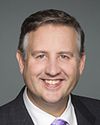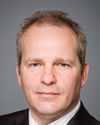With regard to the development of greenhouse gas regulations for the oil and gas sector: (a) what is the total of all relevant government expenditures related to the activities of the Process Working Group (PWG) including, but not limited to, (i) travel expenses (transportation, accommodation, rental of meeting spaces or equipment, food, and other travel-related expenses), (ii) staff time costs, including any overtime pay incurred, (iii) any services or other support procured from consultants or other contractors, (iv) other relevant expenses incurred, with a break-down of all related details; (b) in addition to those expenditures incurred through the operations of the PWG, what are any other government expenditures regarding consultation, discussion, engagement or negotiation with oil and gas sector companies including, but not limited to, (i) travel expenses (transportation, accommodation, rental of meeting spaces or equipment, food, and other travel-related expenses), (ii) staff time costs, including any overtime pay incurred, (iii) any services or other support procured from consultants or other contractors, (iv) other relevant expenses incurred, with a break-down of all related details; (c) in addition to those expenditures incurred through the operations of the PWG, what are any other government expenditures, regarding consultation, discussion, engagement or negotiation with oil and gas sector industry associations including, but not limited to, (i) travel expenses (transportation, accommodation, rental of meeting spaces or equipment, food, and other travel-related expenses), (ii) staff time costs, including any overtime pay incurred, (iii) any services or other support procured from consultants or other contractors, (iv) other relevant expenses incurred, with a break-down of all related details; (d) in addition to those expenditures incurred through the operations of the PWG, what are any other government expenditures, regarding consultation, discussion, engagement, negotiation with the government of Alberta, including, but not limited to, (i) travel expenses (transportation, accommodation, rental of meeting spaces or equipment, food, and other travel-related expenses), (ii) staff time costs, including any overtime pay incurred, (iii) any services or other support procured from consultants or other contractors, (iv) other relevant expenses incurred, with a break-down of all related details; (e) in addition to those expenditures incurred through the operations of the PWG, what are any other government expenditures, regarding consultation, discussion, engagement or negotiation with other provincial or territorial governments, including, but not limited to, (i) travel expenses (transportation, accommodation, rental of meeting spaces or equipment, food, and other travel-related expenses), (ii) staff time costs, including any overtime pay incurred, (iii) any services or other support procured from consultants or other contractors, (iv) other relevant expenses incurred, with a break-down of all related details; (f) what are the government’s expenditures, regarding consultation, discussion, engagement or negotiation with First Nations representatives, including, but not limited to, (i) travel expenses (transportation, accommodation, rental of meeting spaces or equipment, food, and other travel-related expenses), (ii) staff time costs, including any overtime pay incurred, (iii) any services or other support procured from consultants or other contractors, (iv) other relevant expenses incurred, with a break-down of all related details; (g) what are the government’s expenditures, regarding consultation, discussion, engagement or negotiation with representatives of other governments (e.g. municipal governments, U.S. officials, etc.), including, but not limited to, (i) travel expenses (transportation, accommodation, rental of meeting spaces or equipment, food, and other travel-related expenses), (ii) staff time costs, including any overtime pay incurred, (iii) any services or other support procured from consultants or other contractors, (iv) other relevant expenses incurred, with a break-down of all related details; (h) what are the government’s expenditures regarding consultation, discussion, engagement or negotiation with environmental organizations, including, but not limited to, (i) travel expenses (transportation, accommodation, rental of meeting spaces or equipment, food, and other travel-related expenses), (ii) staff time costs, including any overtime pay incurred, (iii) any services or other support procured from consultants or other contractors, (iv) other relevant expenses incurred, with a break-down of all related details; (i) what are the government’s expenditures regarding consultation, discussion, engagement or negotiation with scientists, economists, and other independent experts, including, but not limited to, (i) travel expenses (transportation, accommodation, rental of meeting spaces or equipment, food, and other travel-related expenses), (ii) staff time costs, including any overtime pay incurred, (iii) any services or other support procured from consultants or other contractors, (iv) other relevant expenses incurred, with a break-down of all related details; and (j) what are any additional government expenditures not included above regarding consultation, discussion, engagement or negotiation with other stakeholders, with a break-down of all related details, including, but not limited to, (i) travel expenses (transportation, accommodation, rental of meeting spaces or equipment, food, and other travel-related expenses), (ii) staff time costs, including any overtime pay incurred, (iii) any services or other support procured from consultants or other contractors, (iv) other relevant expenses incurred, with a break-down of all related details?

















